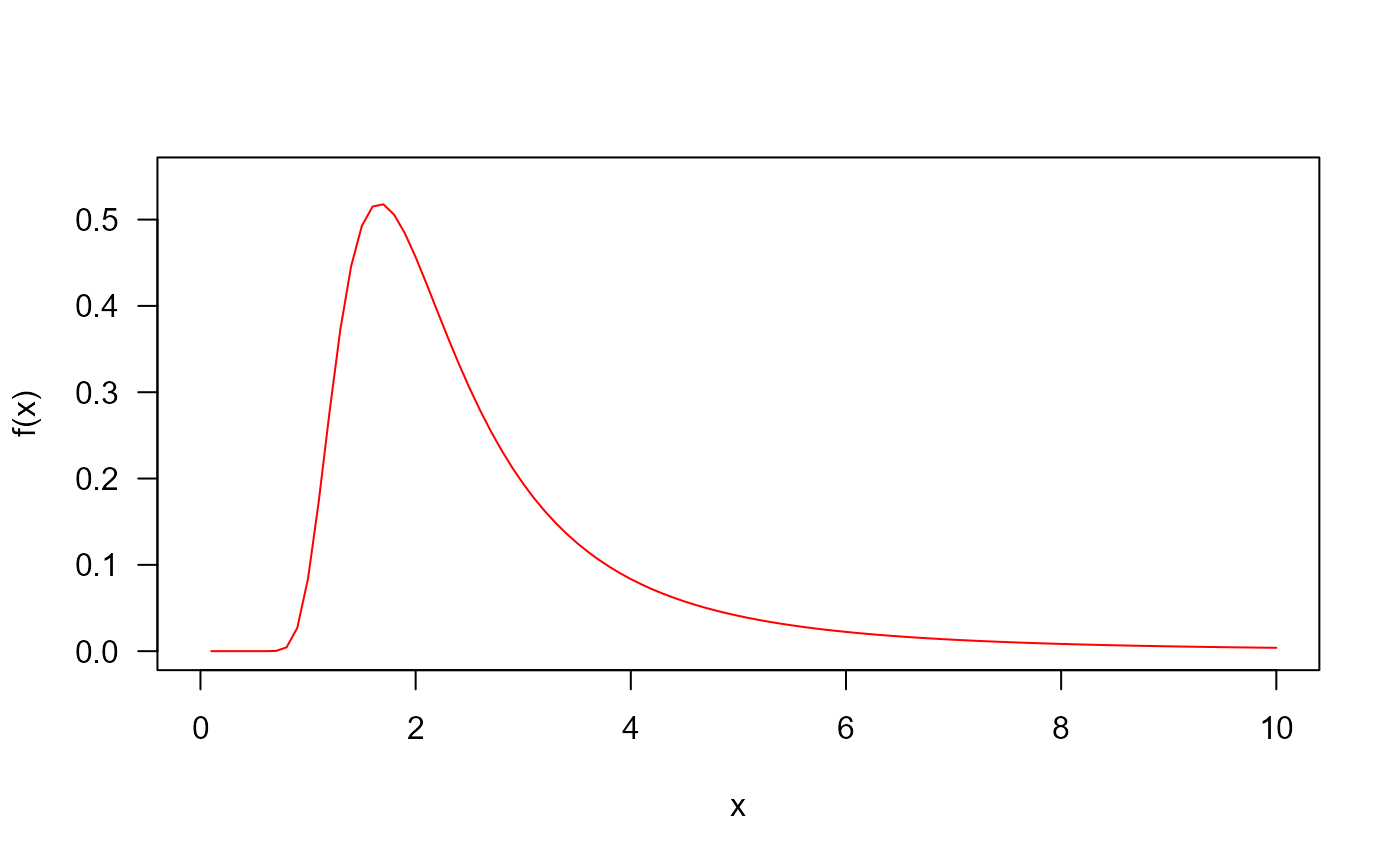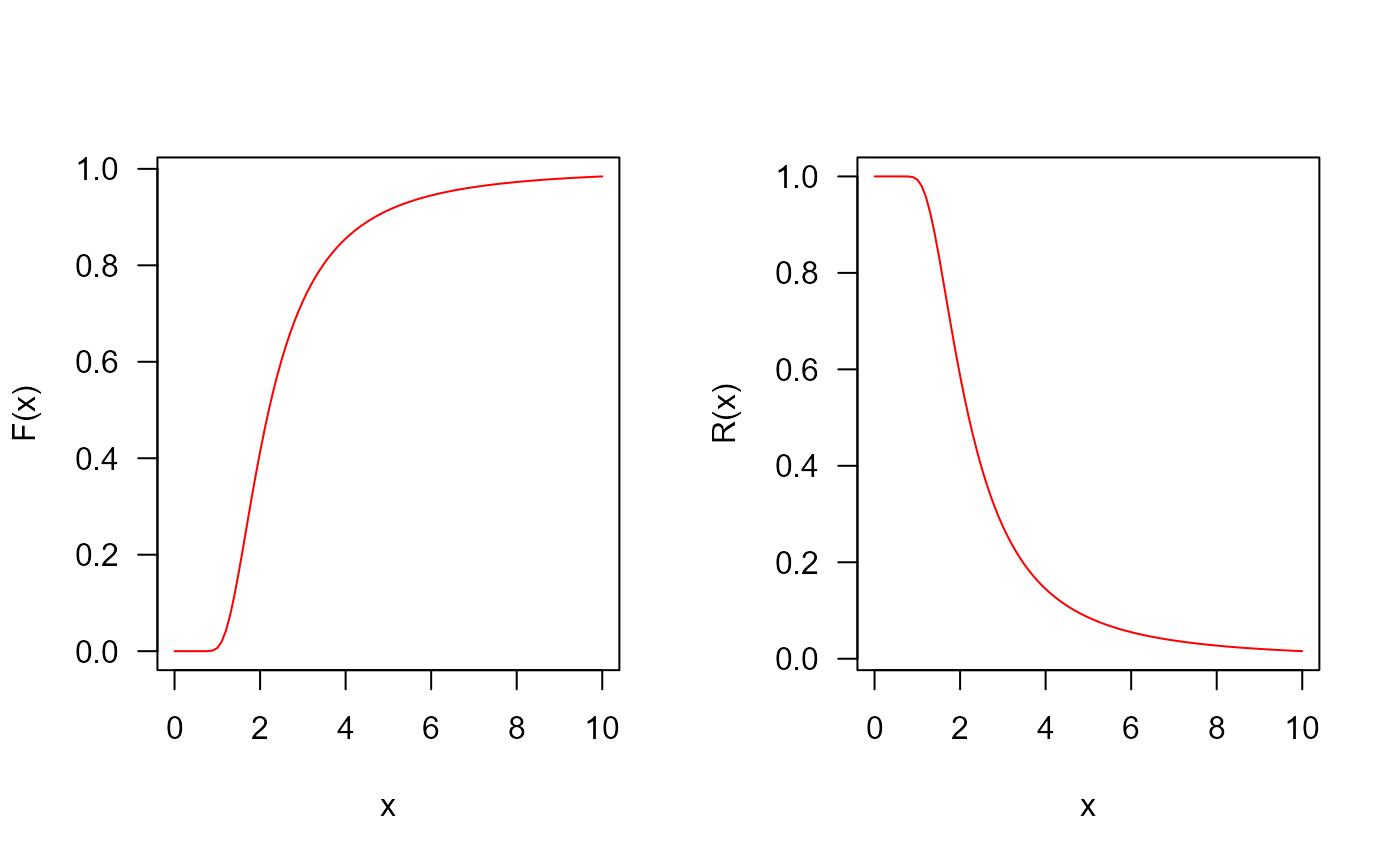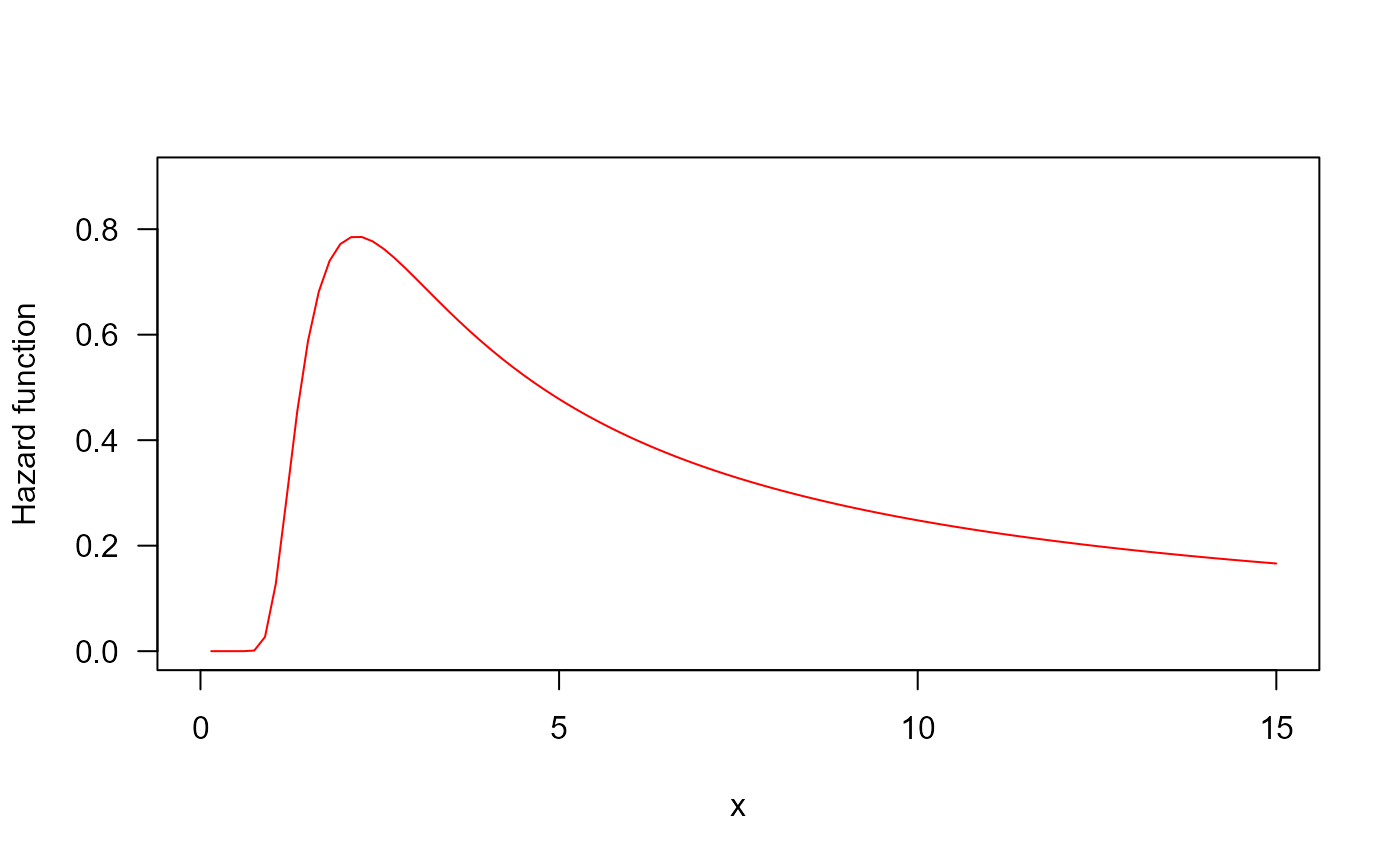Density, distribution function, quantile function,
random generation and hazard function for the inverse weibull distribution with
parameters mu and sigma.
Usage
dIW(x, mu, sigma, log = FALSE)
pIW(q, mu, sigma, lower.tail = TRUE, log.p = FALSE)
qIW(p, mu, sigma, lower.tail = TRUE, log.p = FALSE)
rIW(n, mu, sigma)
hIW(x, mu, sigma)Value
dIW gives the density, pIW gives the distribution
function, qIW gives the quantile function, rIW
generates random deviates and hIW gives the hazard function.
Details
The inverse weibull distribution with parameters mu and
sigma has density given by
\(f(x) = \mu \sigma x^{-\sigma-1} \exp(\mu x^{-\sigma})\)
for \(x > 0\), \(\mu > 0\) and \(\sigma > 0\)
References
Almalki, S. J., & Nadarajah, S. (2014). Modifications of the Weibull distribution: A review. Reliability Engineering & System Safety, 124, 32-55.
Drapella, A. (1993). The complementary Weibull distribution: unknown or just forgotten?. Quality and reliability engineering international, 9(4), 383-385.
Author
Johan David Marin Benjumea, johand.marin@udea.edu.co
Examples
old_par <- par(mfrow = c(1, 1)) # save previous graphical parameters
## The probability density function
curve(dIW(x, mu=5, sigma=2.5), from=0, to=10,
ylim=c(0, 0.55), col="red", las=1, ylab="f(x)")
 #'
## The cumulative distribution and the Reliability function
par(mfrow=c(1, 2))
curve(pIW(x, mu=5, sigma=2.5),
from=0, to=10, col="red", las=1, ylab="F(x)")
curve(pIW(x, mu=5, sigma=2.5, lower.tail=FALSE),
from=0, to=10, col="red", las=1, ylab="R(x)")
#'
## The cumulative distribution and the Reliability function
par(mfrow=c(1, 2))
curve(pIW(x, mu=5, sigma=2.5),
from=0, to=10, col="red", las=1, ylab="F(x)")
curve(pIW(x, mu=5, sigma=2.5, lower.tail=FALSE),
from=0, to=10, col="red", las=1, ylab="R(x)")
 ## The quantile function
p <- seq(from=0, to=0.99999, length.out=100)
plot(x=qIW(p, mu=5, sigma=2.5), y=p, xlab="Quantile",
las=1, ylab="Probability")
curve(pIW(x, mu=5, sigma=2.5), from=0, add=TRUE, col="red")
## The random function
hist(rIW(n=10000, mu=5, sigma=2.5), freq=FALSE, xlim=c(0,60),
xlab="x", las=1, main="")
curve(dIW(x, mu=5, sigma=2.5), from=0, add=TRUE, col="red")
## The quantile function
p <- seq(from=0, to=0.99999, length.out=100)
plot(x=qIW(p, mu=5, sigma=2.5), y=p, xlab="Quantile",
las=1, ylab="Probability")
curve(pIW(x, mu=5, sigma=2.5), from=0, add=TRUE, col="red")
## The random function
hist(rIW(n=10000, mu=5, sigma=2.5), freq=FALSE, xlim=c(0,60),
xlab="x", las=1, main="")
curve(dIW(x, mu=5, sigma=2.5), from=0, add=TRUE, col="red")
 ## The Hazard function
par(mfrow=c(1,1))
curve(hIW(x, mu=5, sigma=2.5), from=0, to=15, ylim=c(0, 0.9),
col="red", ylab="Hazard function", las=1)
## The Hazard function
par(mfrow=c(1,1))
curve(hIW(x, mu=5, sigma=2.5), from=0, to=15, ylim=c(0, 0.9),
col="red", ylab="Hazard function", las=1)
 par(old_par) # restore previous graphical parameters
par(old_par) # restore previous graphical parameters